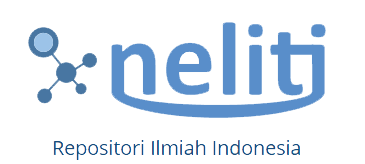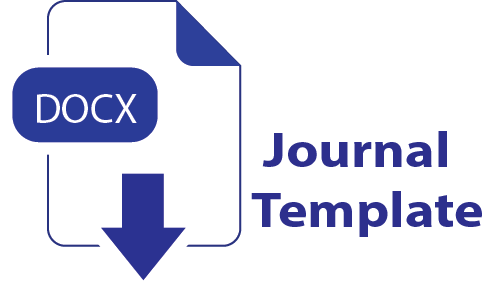PENGARUH PIUTANG MURABAHAH, PEMBIAYAAN MUDHARABAH, MUSYARAKAH DAN PINJAMAN QARDH TERHADAP NET OPERATING MARGIN (NOM) SERTA IMPLIKASINYA TERHADAP NON PERFORMING FINANCING (NPF) BANK UMUM SYARIAH PERIODE 2014-2018
DOI:
https://doi.org/10.35908/jeg.v6i1.1322Abstract
This research aims to see the influence of Murabahah receivables, Mudharabah Financing, Musyarakah financing, and Qardh loans against Net Operating Margin (NOM) as well as the implications against Non-Performing Financing (NPF). The research object is the Sharia General Bank in Indonesia from 2014-2018. The sampling method used in this research is purposive sampling with selected samples as many as 10 sharia banks out of 14 sharia public banks. Data were analyzed by using a panel regression analysis model, and it was processed in Eviews 10. The results showed that the Murabahah receivables have a significant and negative effect on Net Operating Margin (NOM), with a coefficient value of-1.08 E-11 and a prob. amounting to 0.0470. Mudharabah financing has a significant and positive effect on Net Operating Margin (NOM), with a coefficient value of 4.98 E-11 and a prob. of 0.0137. Musyarakah financing has a positive effect on Net Operating Margin (NOM), with a coefficient value of 2.97 E-12 and prob. by 0.1579. Qardh loans have a negative effect and not significant to Net Operating Margin (NOM), with a coefficient value of-2.88 E-09 and prob. of 0.4773. Besides, receivables Murabahah, financing Mudharabah, Musyarakah, and Qardh loans have a significant effect on Net Operating Margin (NOM) simultaneously. Net Operating Margin (NOM) significant negative effect on Non-Performing Financing (NPF), with a coefficient value of-0.165482 and prob. of 0.0126
Key words: Murabahah, Mudharabah, Musyarakah, Qardh, NOM, NPF
References
Afif, N. Z., dan Mawardi, I. (2014). Pengaruh Pembiayaan Murabahah Terhadap Laba Melalui Variabel Intervening Pembiayaan Bermasalah Bank Umum Syariah di Indonesia Periode 2009-2013.JESTT, Vol. 1, No. 8, 565-580.
Algifari. (2011). Analisis Regresi Teori, Kasus dan Solusi. BPFE: Yogyakarta. Edisi ke 2
Al-Zyoud, A. S. A., Almsafir, M. K., dan Al-Smadi, A. A. (2013). Islamic Finance Modes in Jordanian Economy: A Comparative Study.Australian Journal of Basic and Applied Sciences, Vol. 7, No. 10, 347-353.
Amalia, N., dan Fidiana. (2016). Struktur Pembiayaan dan Pengaruhnya Terhadap Profitabilitas Bank Muamalat Indonesia dan Bank Syariah Mandiri. Jurnal Ilmu dan Riset Akuntansi, Vol. 5, No. 5, 1-16.
Antonio, Muhammad Syafi’I (2009). Bank Syariah dari Teori ke Praktik. Jakarta: GEMA INSANI.
Antoni, M. S. (2001). Bank Syariah: Dari Teori ke Praktik. Jakarta: Gema Insani. Cetakan. 1
Ariyani. (2010). Analisis pengaruh car, fdr, bopo dan npf terhadap profitabilitas pada pt bank muamalat indonesia tbk. Al-Iqtishad, Vol. 2, No. 1, 97-123.
Ascarya. (2015). Akad dan Produk Bank Syariah (Ed. ke-5). Jakarta: PT Raja Grafindo Persada.
Astuti, S. P. (2014). Modul Praktikum Statistika. Surakarta: Fakultas Ekonomi dan Bisnis Islam.
Bank Indonesia, Kodifikasi Peraturan Bank Indonesia Kelembagaan Penilaian Tingkat Kesehatan Bank(Jakarta: Pusat Riset dan Edukasi Bank Sentral, 2012), h. 183
Chalifah, E., dan Sodiq, A. (2015). Pengaruh Pendapatan Mudharabah dan Musyarakah Terhadap Profitabilitas (ROA) Bank Syariah Mandiri Periode 2006-2014.Jurnal Ekonomi Syariah, Vol. 3, No. 1, 28-47.
Fadhila, N. (2015). Analisis Pembiayaan Mudharabah dan Murabahah Terhadap Laba Bank Syariah Mandiri.Jurnal Riset Akuntansi dan Bisnis, Vol. 15, No. 1, 65-77.
Ghozali, Imam. (2011). Aplikasi Analisis Multivariate dengan Program IBM SPSS 19 (Ed. Ke-5). Semarang: Badan Penerbit Universitas Diponegoro.
Hanania, L. (2015). Faktor Internal Dan Eksternal Yang Mempengaruhi Profitabilitas Perbankan Syariah Dalam Jangka Pendek Dan Jangka Panjang.Perbanas Review, Vol. 1, No. 1, 151-168.
Kasmir. (2015). Manajemen Perbankan (Ed. ke-13). Jakarta: PT Raja Grafindo Persada.
Latan, H. Dan Temalagi, S. (2013). Analisis Multivariate Teknik dan Aplikasi Menggunakan Program IBM SPSS 2.0. Bandung: Alfabeta
Mawaddah, N. (2015). Faktor-Faktor Yang Mempengaruhi Profitabilitas Bank Syariah. Etikonomi, Vol. 14, No. 241-256.
Muhammad. (2005). Manajemen Pembiayaan Bank Syariah. Yogyakarta: UPP YKPN.
Muslim, Arfan, M., dan Julimursyida. (2014). Pengaruh Pembiayaan Murabahah Dan Musyarakah Terhadap Profitabilitas (Studi Pada Bpr Syariah Di Indonesia. Jurnal Magister Akuntansi, Vol. 3, No. 4, 85-93.
Nawari. (2010). Analisis Regresi dengan MS Excel 2007 dan SPSS 17. Jakarta: PT. Elex Media Komputindo
Ogilo, F. (2016). Effects of Financial Instruments on Performance of Islamic Banks in Kenya.The International Journal Of Business & Management, Vol. 4, No. 8, 40-45.
Permata, R. I. D., Yaningwati, F., dan Zahroh, Z.A. (2014). Analisis Pengaruh Pembiayaan Mudharabah dan Musyarakah Terhadap Tingkat Profitabilitas (Return On Equity).Jurnal Administrasi Bisnis (JAB), Vol. 12, No. 1, 1-9.
Pramuka, B. A. (2010). Faktor-Faktor Yang Berpengaruh Terhadap Tingkat Profitabilitas Bank Umum Syariah. Jurnal Akuntansi, Manajemen Bisnis dan Sektor Publik (JAMBSP), Vol. 7, No. 1, 63-79.
Suryani. (2011). Analisis Pengaruh Financing To Deposit Ratio (FDR)Terhadap Profitabilitas Perbankan Syariah Di Indonesia. Walisongo, Vol. 19, No. 1, 47-74.
Wibowo. E. S., dan Syaichu, M. (2013). Analisis Pengaruh Suku Bunga, Inflasi, CAR, BOPO, NPFTerhadap Profitabilitas Bank Syariah.Diponegoro Journal of Management, Vol. 2, No. 2, 1-10.
Widyaningrum, L., dan Septiarini, D. F. (2015). Pengaruh CAR, NPF, FDR, dan OER Terhadap ROA Pada Bank Pembiayaan Rakyat Syariah Di Indonesia Periode Januari 2009 Hingga Mei 2014. JESTT Vol. 2, No. 12, 970-985.
http://www.syariahmandiri.co.id/
https://www.bnisyariah.co.id/id-id/
https://www.maybank.co.id/syariah
https://www.bankmuamalat.co.id/
https://www.paninbanksyariah.co.id/
https://www.syariahbukopin.co.id/
https://www.megasyariah.co.id/
Downloads
Published
How to Cite
Issue
Section
License
Authors who publish with this journal agree to the following terms:
- Authors retain copyright and grant the journal right of first publication with the work simultaneously licensed under a Creative Commons Attribution License   that allows others to share the work with an acknowledgement of the work's authorship and initial publication in this journal.
- Authors are able to enter into separate, additional contractual arrangements for the non-exclusive distribution of the journal's published version of the work (e.g., post it to an institutional repository or publish it in a book), with an acknowledgement of its initial publication in this journal.
- Authors are permitted and encouraged to post their work online (e.g., in institutional repositories or on their website) prior to and during the submission process, as it can lead to productive exchanges, as well as earlier and greater citation of published work










